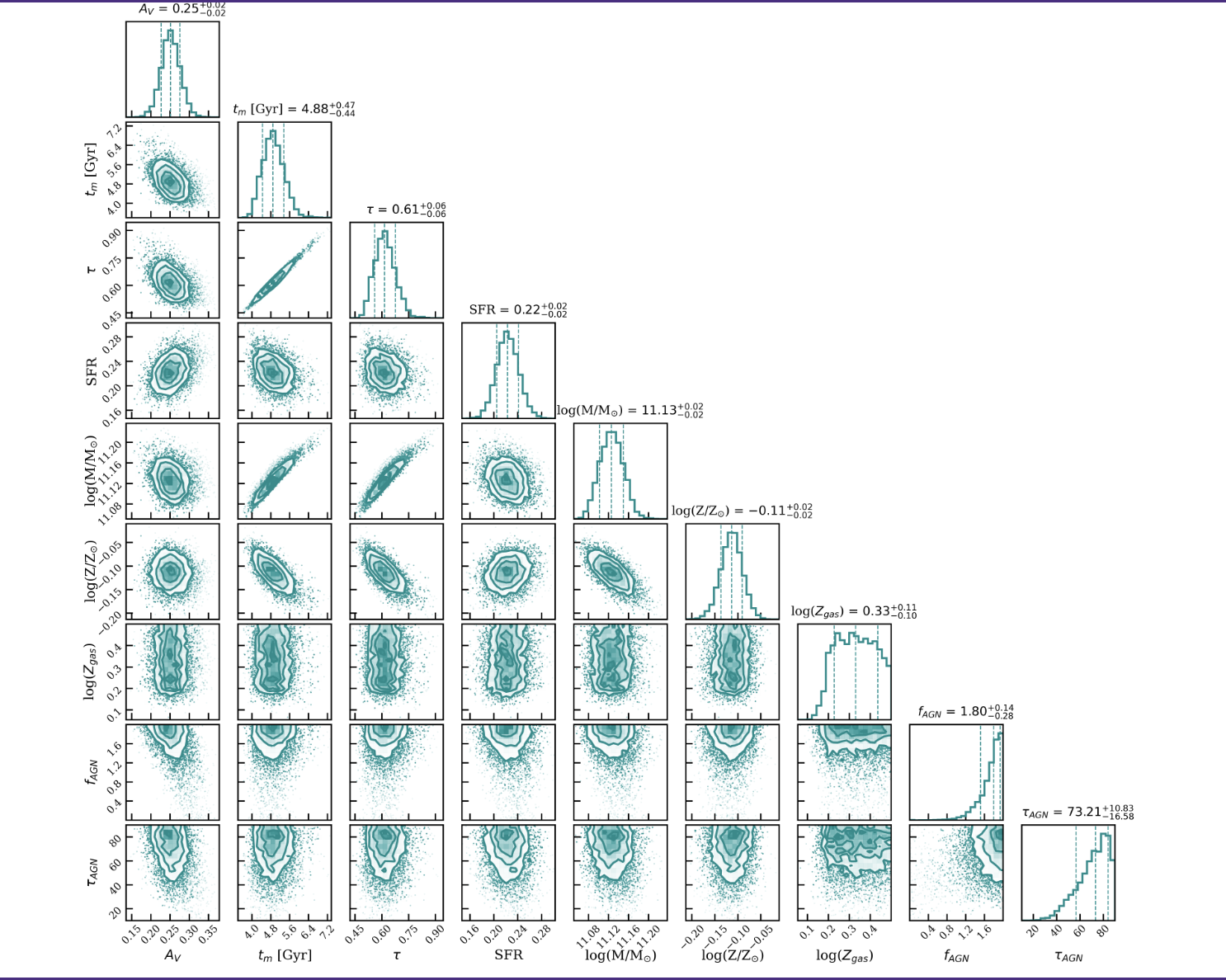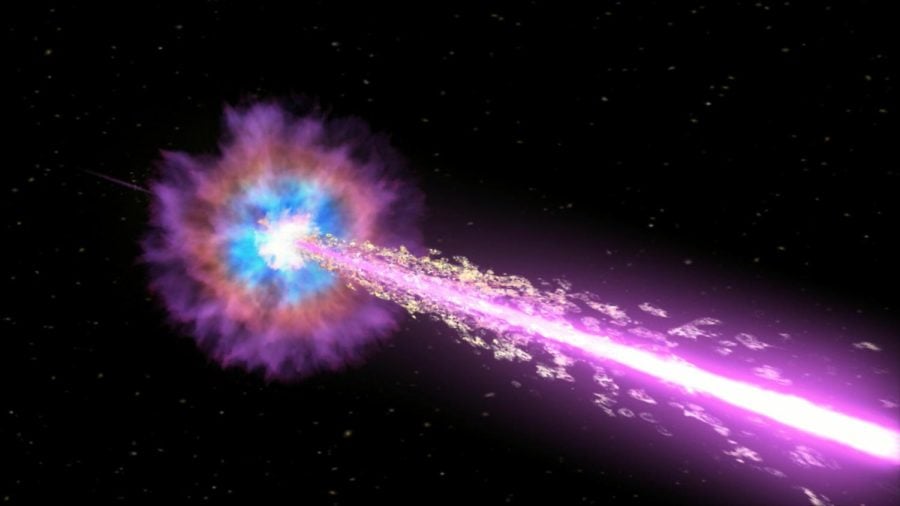Northwestern astronomers develop largest known database of galaxies originating short gamma-ray bursts
The above image is an artist’s rendition of a gamma-ray burst. Short Gamma-ray bursts are brief explosions of energy that are detected about a dozen times a year.
January 16, 2023
A Northwestern-led team of astronomers reached for the stars with a recently compiled gamma-ray galaxy database.
The public database, known as BRIGHT, or the Broad-band Repository for Investigating Gamma-ray burst Host galaxies Traits, details 84 galaxies known to originate short gamma-ray bursts.
Short gamma-ray bursts, or SGRBs, are explosions of energy theorized to be generated by large cosmic events such as the merging of two high-density space objects like neutron stars.
Astrophysics Prof. Wen-fai Fong of the Center for Interdisciplinary Exploration and Research in Astrophysics advised the project and began collecting data on SGRBs almost a decade ago. She said that BRIGHT was comparable to investigating a crime scene.
“These are kind of indirect ways to probe the origins of these cosmic explosions,” she said. “It’s almost like performing forensics. If you think of gamma-ray bursts as an explosion that happened, you want to go to the crime scene and study it.”
But Fong said it took years to collect data on SGRBs since the bursts only occur about a dozen times a year. NU’s team used data from telescopes around the world and above it, such as the W.M. Keck Observatory in Hawaii and the Hubble Space Telescope, to identify and study the galaxies.
Fifth-year astronomy Ph.D. student Anya Nugent led the study on modeling SGRB galaxies. It was her idea to make the data public through a website so other researchers could access it.
“Wen-fai and I were thinking about, how can we have the most impact with this project, and what’s the most useful thing for the community?” Nugent said. “And it’s been a great place to store all of our data for the past few years.”

Nugent, A. E., et al. “The Distant, Galaxy Cluster Environment of the Short GRB 161104A at z \ensuremath\sim 0.8 and a Comparison to the Short GRB Host Population.” \apj, vol. 904, no. 1, Nov. 2020, p. 52, https://doi.org/10.3847/1538-4357/abc24a. (Graphic courtesy of BRIGHT: Open GRB Catalogue)
Researchers can use the data and tools BRIGHT provides to study similarities between galaxies that produce gamma-ray bursts. Fong said this database could allow astronomers to learn more about other galaxies.
Some researchers theorize that explosions caused by colliding neutron stars can create precious metals. Therefore, SGRBs could allow researchers to understand more about the elements of Earth and their origins.
Second-year astronomy Ph.D. student Yuxin Dong co-authored the study on galaxy modeling said she is excited by the database’s potential to further research on galaxies and other space phenomena. She also helped design the website, which includes pictures of the 84 galaxies and details how the team used galaxy modeling to theorize characteristics such as age and dust content.
“The three of us kind of went through every single step to make sure that this catalog is out in public,” Dong said. “And I think that’s what science is about — you work together to produce something that will benefit the community for years to come.”
Nugent says one of the most rewarding parts of working in astronomy is the collaborative community. She’s most excited to see what other researchers will do with the results of her study.
The researchers receive text notifications each time an SGRB is detected by a telescope, which still excites Fong — even after almost a decade of studying the rays.
“Sometimes you wake up in the night, and there’s nothing of note, or we can’t find a host galaxy or whatever,” Fong said. “And then other times you wake up in the night, and it’s a game-changing event. So, we’re definitely still excited about every one.”
Email: [email protected]
Twitter: @MikaEllison23
Related Stories:
— Dearborn Observatory and CIERA host public viewing of total lunar eclipse
— Jason Wang brings years of experience in exoplanet imaging to Northwestern
— Brainstorm: ISTEAM — centering Indigenous knowledge in science education


